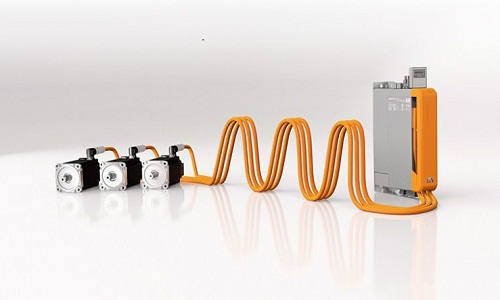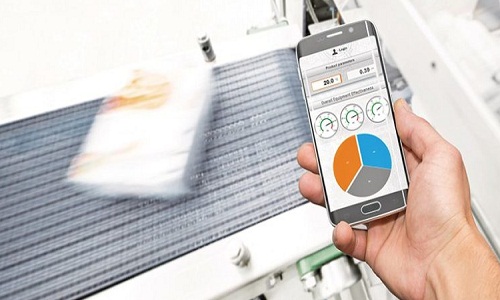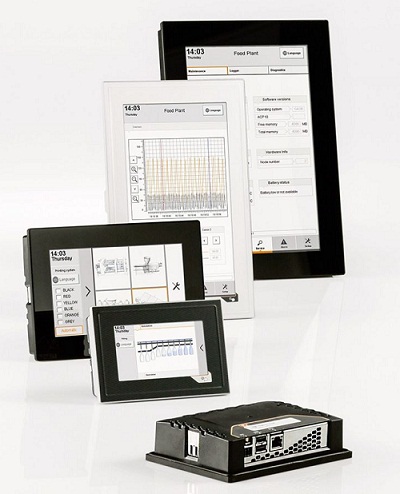Textile industry is booming with innovations taking center stage. Today, manufacturers are equipping their machine with advanced technologies by constantly upgrading their production methods. With latest development in machine functions, various textile technologies have tremendously eased operation, improved productivity and efficiency and at the same time ensured safer working condition. In a 24/7 operated factory, machine downtime of few minutes might lead to huge material and economic losses. In addition, biggest challenge is to bring the production back to normal in shortest possible times. Today, next generation automation technologies can be leveraged to overcome these challenges. Machines built with powerful controllers, high-speed motion components, interactive HMI systems, focus towards improving operational efficiency, reduce machine stoppages and increase availability of the machine. Automation has largely helped textile factories to efficiently use raw material, reduce waste, minimize energy consumption and reduce machine footprint.
Reduced footprint using decentralized control system
 Machine manufacturers are striking a balance between increased productivity and decreased energy consumption. In addition, shop floor space is of prime concern for factories, and they are constantly trying to optimize it. Machine builders can aid the endeavor of factories by reducing the footprint of their machines. Apart from the machine mechanics, cabinet occupies a lot of space. A slightest reduction in cabinet can help reduce costs as well as save space. A decentralized architecture helps machine builders have enhanced performance with same or increased output. Textile machines involves highly dynamic and precise functions, which demands extremely fast movements controlled with absolute precision. Today, machine architectures include high speed and low maintenance drive systems. Machine have become dynamic and such dynamic scalability might become a bottleneck in existing machine design.
Machine manufacturers are striking a balance between increased productivity and decreased energy consumption. In addition, shop floor space is of prime concern for factories, and they are constantly trying to optimize it. Machine builders can aid the endeavor of factories by reducing the footprint of their machines. Apart from the machine mechanics, cabinet occupies a lot of space. A slightest reduction in cabinet can help reduce costs as well as save space. A decentralized architecture helps machine builders have enhanced performance with same or increased output. Textile machines involves highly dynamic and precise functions, which demands extremely fast movements controlled with absolute precision. Today, machine architectures include high speed and low maintenance drive systems. Machine have become dynamic and such dynamic scalability might become a bottleneck in existing machine design.

B&R enables textile machine builders to incorporate decentralized architectures in their machines and provide the necessary scalability in hardware and software. The power panels from B&R, which are integrated PLC and HMI as single unit have been a sheer game changer in this segment. These touch panels have reduced magnitude of control cabinet in the machine. In addition, the compact and versatile X20 I/O system gives complete flexibility over machine topology. An X20 I/O systems connected over Ethernet POWERLINK, a vendor independent real time communication protocol provides the necessary decentralized intelligence in machines, thus, maximizing space utilization effectively. The advanced motion control from B&R – ACOPOS P3 has further been able to reduce cabinet space on the motion front. A single ACOPOS P3 can control three servomotors, offering complete flexibility for expansion to deliver critical machine function. ACOPOS P3 reduces the cabinet space by 69% and the single cable solutions reduces the number of cables. ACOPOS P3 melds seamlessly with machine control system, HMI and safety system offering a complete system solution needed by textile machinery. All these systems are easily programmed using the powerful software from B&R – Automation Studio. Automation Studio is a single platform for enabling programming of complete range of hardware from B&R as well as providing an extensive simulation environment.

Intelligent machine diagnostics
Automation has been enhancing machine performance and B&R has been a trusted name in the textile industry for providing scalable and flexible automation solutions. With machines going digital, machine manufacturers are not just adding intelligence to machine operations, but also to diagnostics. To map the reasons of machine downtime and fix them with an appropriate solution, OEMs are taking advantage of mapp Technology from B&R. mapp Technology is revolutionizing the development of application software in the field of automation. These modular software blocks simplify development of new programs and reduce development time for new machines and systems by an average of 67%. With mapp blocks seamlessly integrated into Automation Studio environment, it becomes extremely easy to configure and relieve the developer of having to program every single detail.
mapp Cockpit, an interesting component of mapp technology is an advanced yet easy-to-use tool for commissioning and troubleshooting machines. mapp Cockpit is built on web-based technology, enabling monitoring of machine parameters graphically over HMI as well as on any web supported devices such as a smart phone. The machine operator can is able to analyze the characteristics of a machine with a high degree of precision, owing to the trend functionality. mapp Cockpit uses open protocol OPC UA to connect and collect information from machines. It allows machine manufacturer easily create commissioning pages tailored to the machine operation.
Scalability makes machines future ready
 In the era of customization, OEMs might not have standard machines built in large quantities but might have more customer specific machines in smaller batches. When technology upgrades, OEMs strive to have it implemented in their existing machines and B&R is the apt choice for machine builders when it comes to scalable systems. In conventional systems, the machine builder needs to know the hardware to be programmed and then can start writing the code. With B&R, the machine builder not only does not need a hardware but also does not need to know which hardware would be used to start programming. Automation Studio programs all B&R products independent of hardware and a machine builder can change from an X20 controller to a power panel (integrated HMI & PLC) to an Automation PC to Simulation at any given point in the machine development. Such scalable systems reduce rework and costs in case of changing hardware after starting development and are preferred by machine builders. This is even true for ACOPOS drives and machine builder can change from one drive system to another in no time. In addition, with B&R a machine builder can synchronize servo, stepper, VFDs and robots easily with no programming effort, thanks to Automation Studio & mapp Technology. All B&R controllers support OPC UA client and server communications, ensuring them to be IoT ready. The machines can share data to IT systems or cloud in real time with queuing protocols such as OPC UA, MQTT or AMQP, which are supported by all B&R systems. Thus, with our scalable portfolio, flexible software and intelligent programming, B&R consistently allows machines to be future ready.
In the era of customization, OEMs might not have standard machines built in large quantities but might have more customer specific machines in smaller batches. When technology upgrades, OEMs strive to have it implemented in their existing machines and B&R is the apt choice for machine builders when it comes to scalable systems. In conventional systems, the machine builder needs to know the hardware to be programmed and then can start writing the code. With B&R, the machine builder not only does not need a hardware but also does not need to know which hardware would be used to start programming. Automation Studio programs all B&R products independent of hardware and a machine builder can change from an X20 controller to a power panel (integrated HMI & PLC) to an Automation PC to Simulation at any given point in the machine development. Such scalable systems reduce rework and costs in case of changing hardware after starting development and are preferred by machine builders. This is even true for ACOPOS drives and machine builder can change from one drive system to another in no time. In addition, with B&R a machine builder can synchronize servo, stepper, VFDs and robots easily with no programming effort, thanks to Automation Studio & mapp Technology. All B&R controllers support OPC UA client and server communications, ensuring them to be IoT ready. The machines can share data to IT systems or cloud in real time with queuing protocols such as OPC UA, MQTT or AMQP, which are supported by all B&R systems. Thus, with our scalable portfolio, flexible software and intelligent programming, B&R consistently allows machines to be future ready.
Textile industry going digital with B&R
Like every other industry, textile industry too is on course of digital transformation. As the industry moves towards digitalization, machines within a factory are expected to connect with each other and to IT systems. B&R trusts open source, vendor independent solutions with OPC UA acting as a key player enabling vertical and horizontal connectivity. As machines are developed to meet new age regulations, B&R helps machine builders with its advanced automation solutions in this transformation. With edge architectures, together with predictive maintenance, end users achieve reduced machine downtime and higher productivity.












